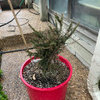epigeal vs. hypogeal(?)
sequoia_stiffy
16 years ago
More Discussions
Maybe somebody can help me. I'm confused as to what exactly is the difference between these terms in reference to seed germination. When someone says that "germination is epigeal", does that mean that the seed does not need to be buried to germinate, and thus hypogeal means that the seed does need some depth below the surface to germinate or am i thinking about this in the wrong way?
Also, I read something about how hypogeal refers to temperature changes that are needed to induce germination. It's confusing the hell out of me really. If a redwood seed is "epigeal", what in the hell does that mean exactly?
Also, I checked on a dawn redwood seed that I planted from gathered seed a few weeks ago (along with about a hundred other dawn redwood seeds that didn't germinate). It is just bursting it's seed coat and sending the tiny tip of what is to be a root down into the soil. I oriented it a bit with the tip of a knife (very gently) and covered it with a small bit of rich black soil, only about a mm though. I am guessing this will help it's root establish.




pineresin
davidrt28 (zone 7)
Related Professionals
Hyattsville Landscape Architects & Landscape Designers · Southfield Landscape Architects & Landscape Designers · East Patchogue Landscape Architects & Landscape Designers · Springfield Landscape Contractors · Stamford Landscape Contractors · Andover Landscape Contractors · Dunwoody Landscape Contractors · Lancaster Landscape Contractors · Leicester Landscape Contractors · Little Ferry Landscape Contractors · Louisville Landscape Contractors · Pleasant Prairie Landscape Contractors · River Ridge Landscape Contractors · Thonotosassa Landscape Contractors · Twin Falls Landscape Contractorssequoia_stiffyOriginal Author
davidrt28 (zone 7)
Fledgeling_
Fledgeling_
Fledgeling_